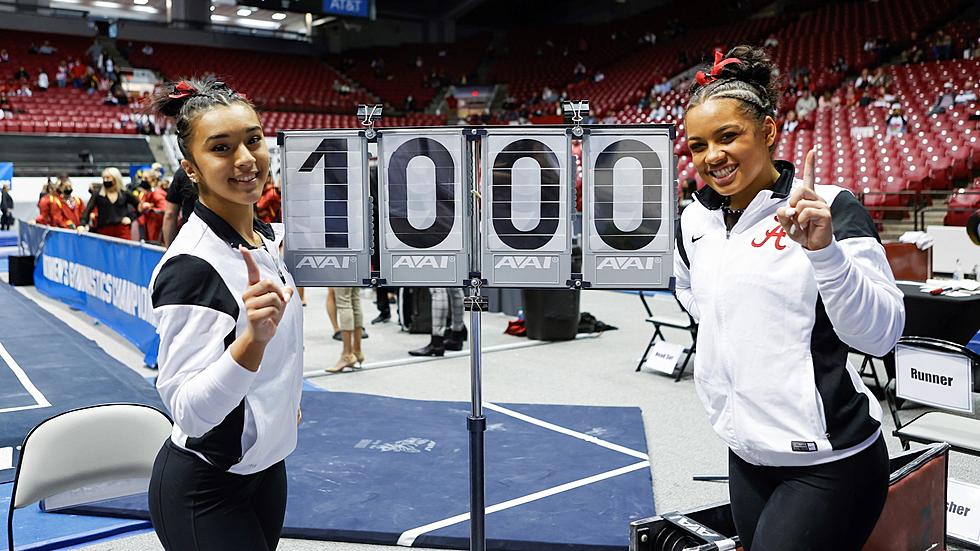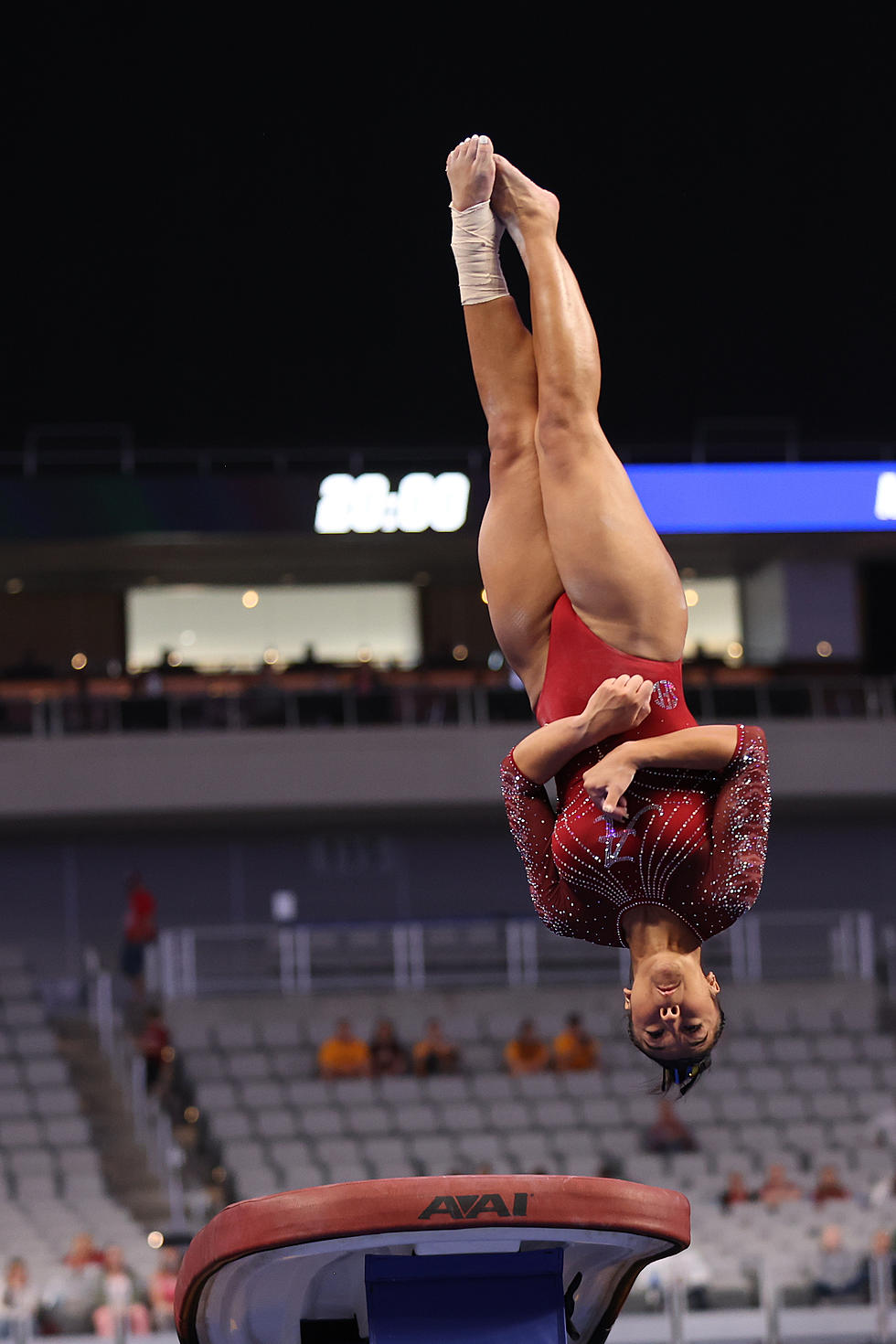
A Beginner’s Guide to Cheering for Gymnastics
Alabama Gymnastics Head Coach Dana Duckworth called on students and fans to show up to Coleman Coliseum for the Crimson Tide's first home meet against the Kentucky Wildcats. She was happy with the turnout but wanted the fans to be louder. Some fans expressed that they don't know when to cheer. Not understanding how gymnastics is scored could play a part in that.
However, Coach Duckworth says fans shouldn't wait until the score is released to cheer.
"At the end of the day, the second our athlete's feet hit the ground for that dismount, or that tumbling pass that last skill on balance beam, that's the moment that the hands go up and you explode out of your chair and you just scream in excitement."
While you don't need to know what the score is to cheer, it might make the meet more entertaining to watch if you have an idea of what's going on. Here are some basic things to look for when you watch or go to another gymnastics meet.
The Basics
The most important thing to know when going to a gymnastics meet is to cheer loudly after a gymnast sticks their landing on any apparatus they are competing on. The scores are usually released a minute or two after the gymnast finishes her routine.
There are usually two judges per event and the two scores are averaged. They both hold up their scores on little scoreboards and the over all score is put on a bigger scoreboard, but you have to know where to look; otherwise, you'll wait for the announcer to say the score.
The Nitty Gritty
Six gymnasts compete on each event, but only the highest five scores count in collegiate gymnastics.
When it comes to the actual scoring, each apparatus has a set of criteria that each gymnast is judged on.
On vault, judges want to see amplitude, distance from the vault, level of difficulty, and stuck landings. Normally each collegiate vault starts out at either a 9.950 or 10.0. While teams would preferably have six 10.0 start value vaults, they also have to determine if the risk is going to pay off. The 9.950 vaults that the gymnasts usually perform are normally steady scoring vaults– the yurchenko full. The 10.0 start value vaults have the potential to score big; however there is more that could go wrong, especially with finding the landings.

Alabama's lineup against Auburn had six 10.0 start value vaults, but that was an instance where the risk didn't necessarily pay off in competition. A few of the vaults were under rotated, causing gymnasts to take a step back on their 1.5-twisting yurchenko (most common collegiate 10.0 start value vault). The experience and starting that lineup a third of the way through the season, however, could very well pay off in the long run.
The uneven bars, balance beam, and floor routine all start out at a 9.500 and the gymnasts must include certain elements that give them bonuses to reach a total start value of a 10.0 in competition.
For the uneven bars, judges are looking for perfect handstands (must be within 10 degrees of vertical), amplitude on the flight series, and the stuck landings. There are different combinations to get the bonuses to add up to a 10.0.
On the balance beam, gymnasts have to have at least a two-tumbling pass series, a jump series, and some type of turn. Like the bars, some elements can give the gymnast bonuses like three-tumbling pass series, wolf turns, etc. Judges want to see 180 degree leaps, no balance breaks, fluid motions, and stuck landings.
The judges look for amplitude/rotation on tumbling passes, artistry of the routine, controlled landings, and 180 degrees on splits in the floor routine. There are different levels of tumbling passes, turns, and leap combinations that give gymnasts bonuses.
You can put your cheering to the test Friday, February 4th, in the tri-meet versus Western Michigan and UNC. The meet starts at 7:30 p.m. C.T. and will be broadcasted on the SEC Network.
Follow @julietbrown_tv on twitter to stay up to date on Alabama gymnastics and more.
More From Tuscaloosa Thread









